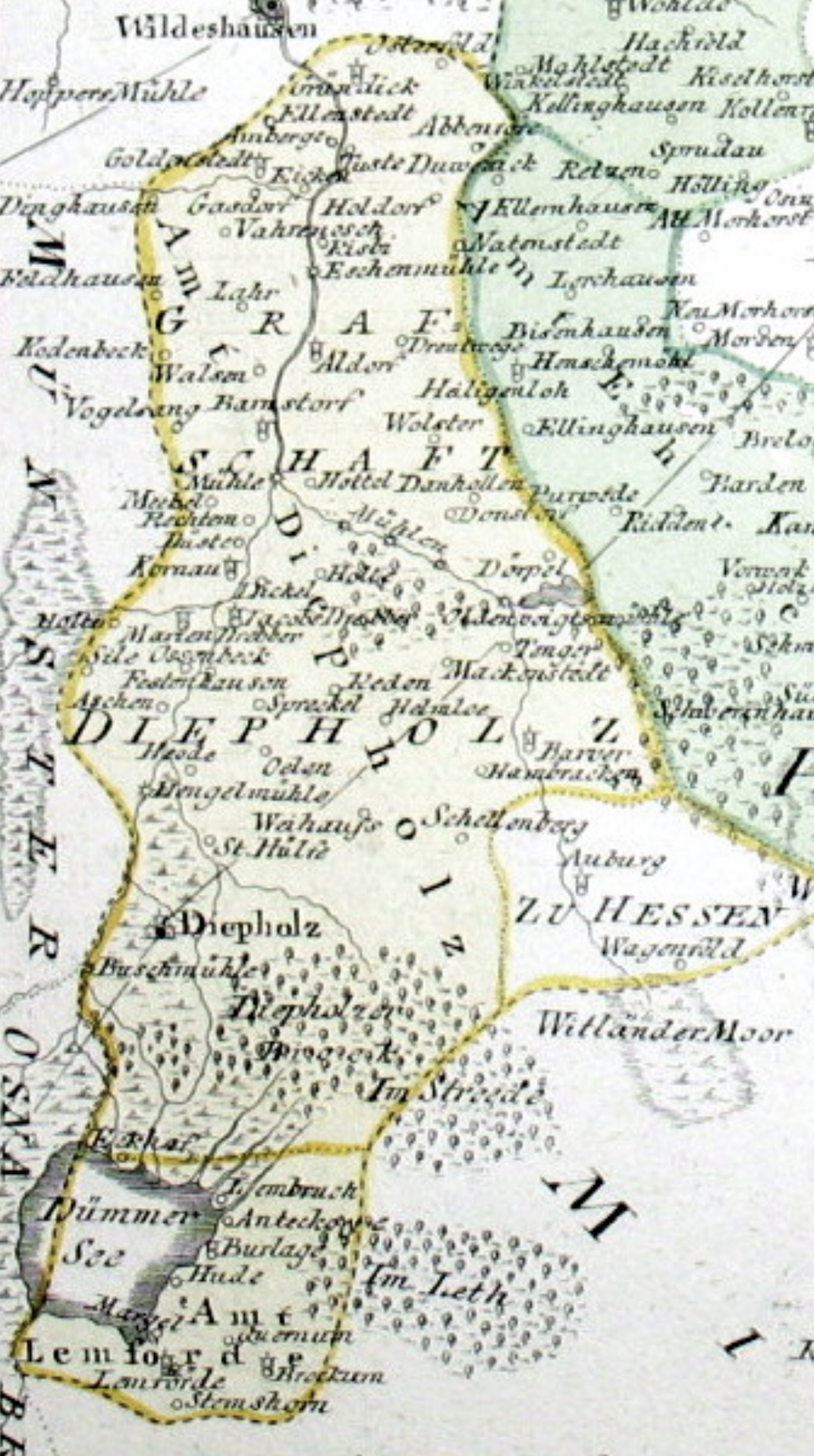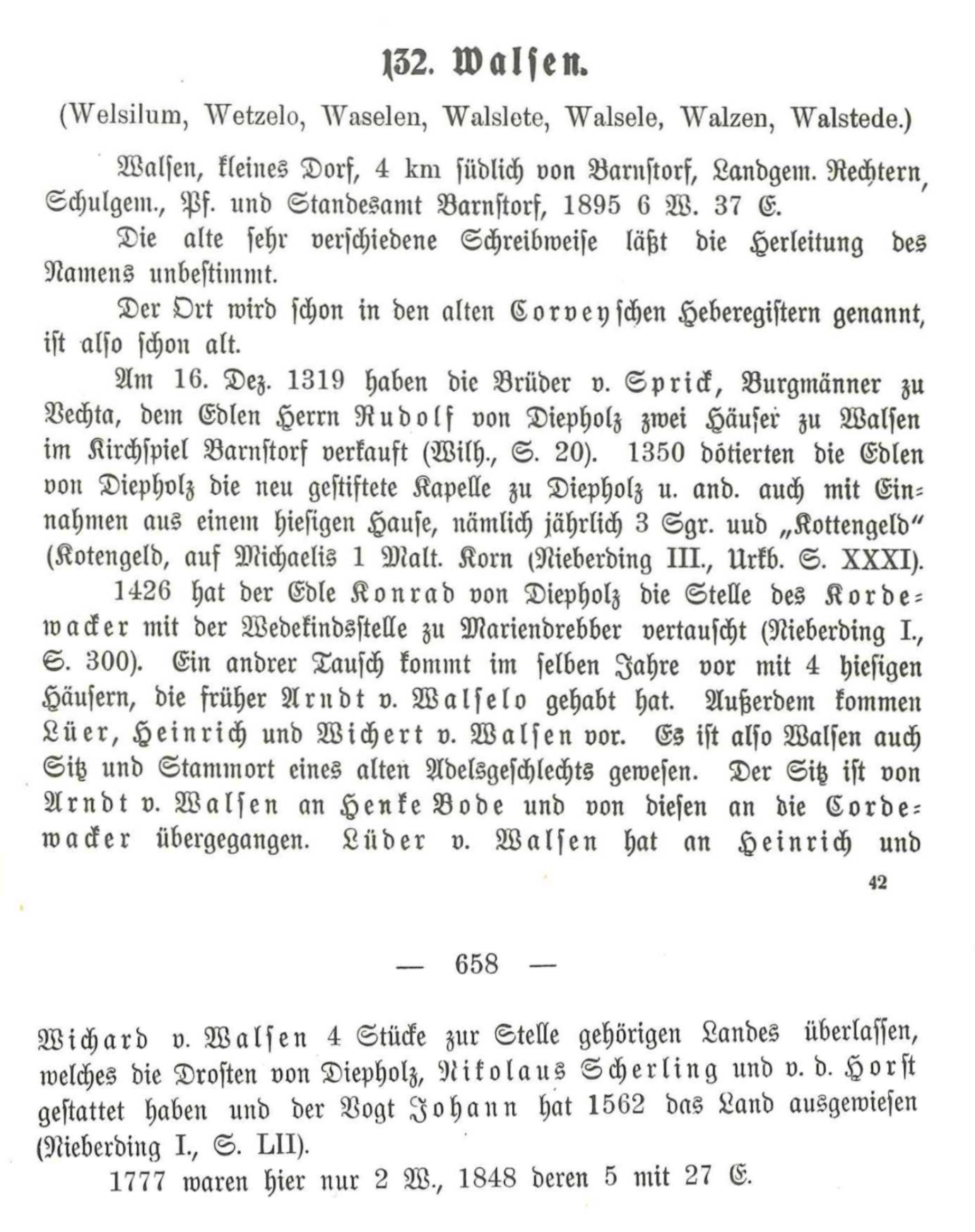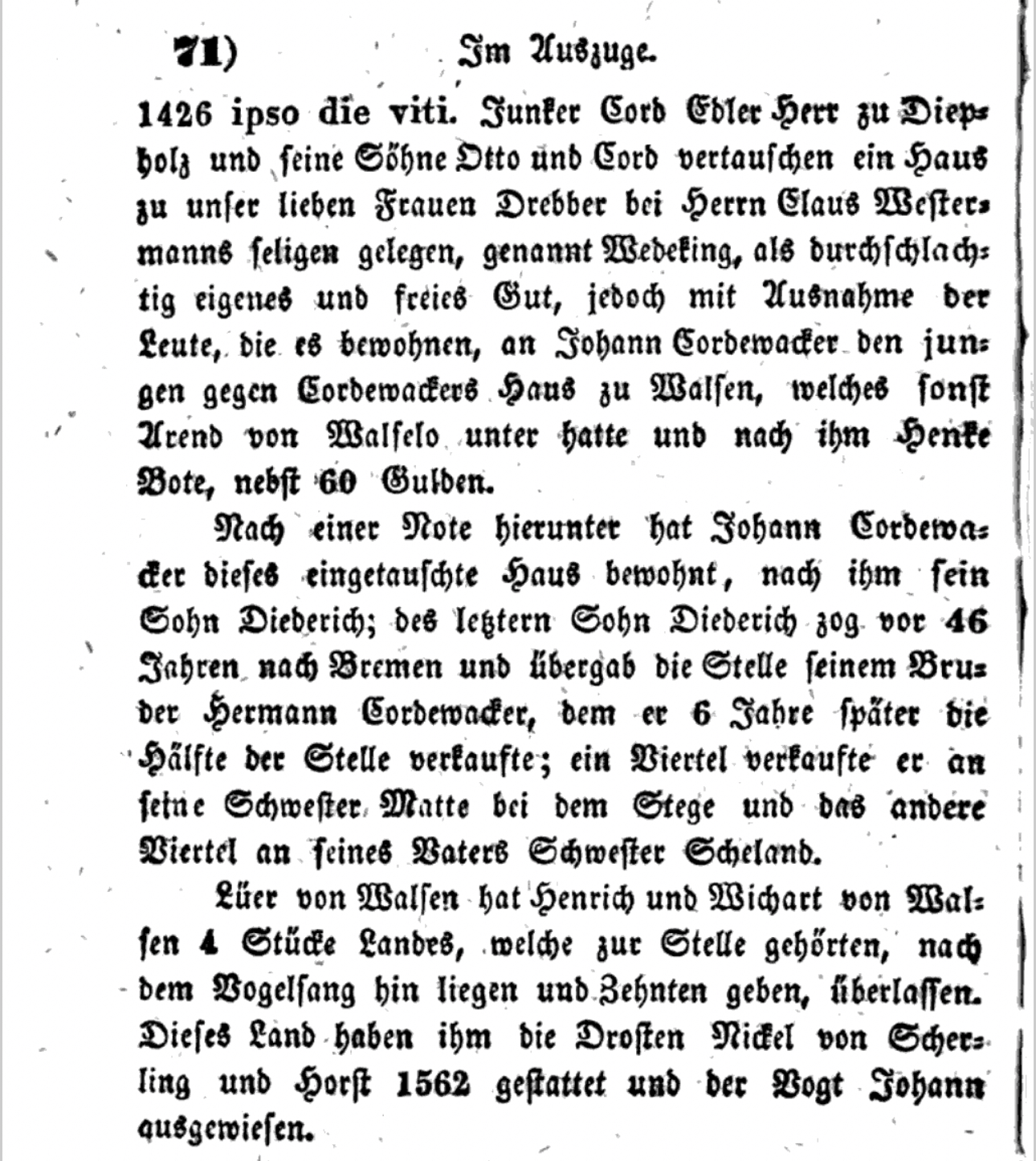walsemann.org
walsemann.org
one name - one family.
Not just Walsemann. Also Walsman, Walseman. Everywhere in the world.
The Origin
Walsen. In the year 1368.
A farm near Diepholz
in Germany.
30 miles south of Bremen.

A brief family history between nobility, estate ownership, and name change.
In the year 1651, near Diepholz (today’s Lower Saxony), Gerd Albert – the first Walsemann – was born.
A new name, seemingly out of nowhere: Neither his father Rolf (Rolof) tho Walsen nor his mother Catarina, née Bosching, bore this surname. From that moment on, the children Gerd Albert, Wichert, Hedwig, and Gesche were suddenly called Walsemann.
Thus a unique family name emerged – down-to-earth, free of aristocratic pretension, and today carried in variants such as Walsemann, Walsman, or Walseman by around 10,000 people worldwide.
Why did the family give up the old designation “tho Walsen” and adopt a bourgeois surname? A name tied to an estate is rarely given up lightly – especially since the estate near Barnstorf had regional significance for centuries.
A year carved into an old beam points to 1368 – the estate already existed at that time. Who founded it and when exactly remains uncertain.
Historians point to older forms of the place name “Walsen”: Welsilum, Wetzelo, Walselo, Walslete, Walsele, Walzen, Walstede; sometimes also Welsile or Walseke – documents mention this place as early as the 10th century (around 900 AD)[1].
Nobility as a social class and the use of surnames only became common after 1100. In the 13th–14th century, many Walloons from Switzerland migrated to northwestern Germany and often simply called themselves “Walsen.”
For our ancestors, however, a derivation from the Walloons is ruled out: It is documented that Arndt von Walselo (also “Arndt von Walsen”) owned the estate Walsen sometime before 1426. The name is therefore directly tied to the place.
The historian Heinrich Gade found in 1901 documents showing that Arndt von Walselo sold a house on the Walsen estate (formerly Walselo) sometime before 1426[1]:
It remains unclear which house this was and whether descendants of Arndt later lived in Walsen – but it is likely: In 1562, Luer (Lüder) von Walsen and his sons Heinrich (Henrich) and Wichart owned land there – plots in the direction of Vogelsang (about 2 km away)[2].
Further documents from 1570 list “Hinrich at Walsen” and “Wichart at Walsen” as free landowners[3].
Until the early 17th century, Gerd tho Walsen (born ca. 1600) and his son Rolf (Rolof) tho Walsen (born 1625) still bore the noble title; but Rolf’s children no longer did.
Walsen lay in the frontline area of the Thirty Years’ War (1618–1648). Looting, destruction, and tributes ruined many small noble families:
“Several farms were devastated, their owners fled or killed. Only 20 years later could all farms be worked again.” – Chronicle of Barnstorf
Nobles were prime targets for looters, kidnapped and ransomed. Many gave up their titles or fled to towns – known as “darkened nobility.” The von Walsen family (now Walsemann) likely belongs to this group.
Early ownership succession of Walsen estate:
Between this family and Gerd tho Walsen (born ca. 1600), there is a gap of 1–2 generations. Yet there is little doubt about the lineage: place of residence Walsen, surname Walsen, and the first-name tradition (Wichart → Wichert) point to a direct relationship.
Although the noble title was abandoned, the Walsemann family seems to have retained rights: An archive entry from 1779 mentions a meadow sold by Friedrich Heinrich Walsemann – an indication of continuing land ownership, while serfs were only allowed to work land.
Even in the 19th century, the estate is said to have covered nearly 300 hectares – extraordinary compared to the usual 20–30 hectares of a full farmstead.
The family line can be traced directly back to Rolf (Rolof) tho Walsen and his father Gerd. Gade summarizes: “Walsen [was] seat and ancestral home of an old noble family”[1]. Even though the noble title was lost during the Thirty Years’ War, it remains: The Walsemann family descends from an old nobility.



The digital ancestral archive. Access for anyone who is named Walsemann, Walseman, or Walsman. Or can prove descent.
Register / Login